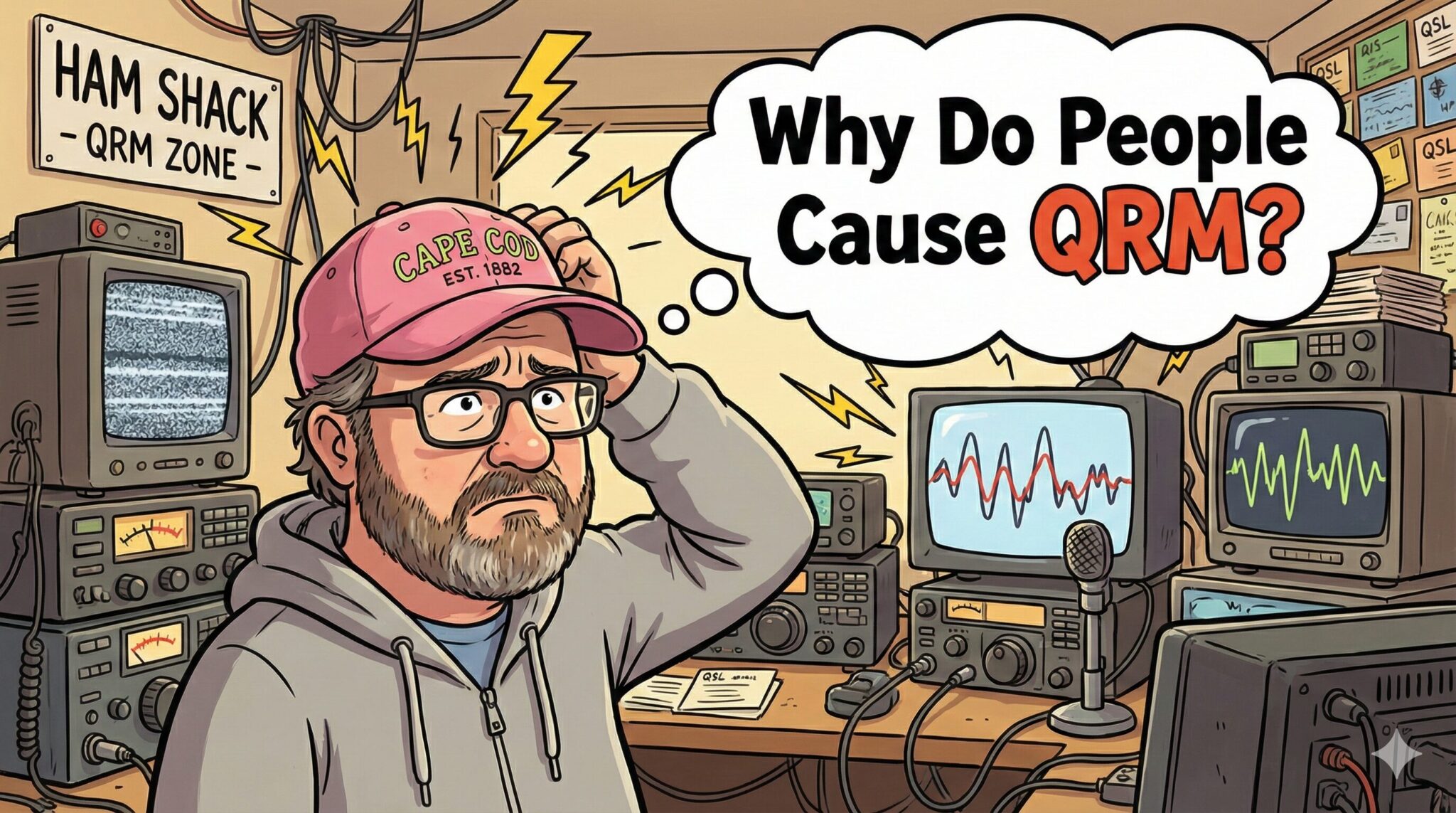What Is Series Resonance? Exploring Electrical Circuit Behaviour
Series resonance is a fascinating phenomenon in electrical circuits. It occurs when the inductive and capacitive reactances cancel each other out, leaving only resistance in the circuit. At resonance, the circuit draws maximum current and power from the source.
In a series resonant circuit, a resistor, inductor, and capacitor are connected in series. When the applied voltage's frequency matches the circuit's natural frequency, resonance occurs. This leads to interesting effects, like voltage magnification across the reactive components.
Understanding series resonance is vital for many electrical applications. It's used in radio tuning circuits, filters, and power factor correction systems. You can design more efficient and effective electrical systems by grasping its principles.
Key Takeaways
- Series resonance occurs when inductive and capacitive reactances cancel out.
- The circuit draws maximum current at the resonant frequency
- It's crucial for various applications like radio tuning and filtering
Fundamentals of Series Resonance
Series resonance is a critical concept in electrical circuits. It happens when inductive and capacitive elements cancel each other out at a specific frequency. This creates unique electrical behaviour that's useful in many applications.
Definition of Series Resonance
Series resonance occurs in a circuit with a resistor, inductor, and capacitor connected in series. At the resonant frequency, the inductive and capacitive reactances become equal and opposite. This causes them to cancel out, leaving only the resistance.
The result? The circuit's impedance drops to its lowest point. Current flow reaches its peak. You'll see this happen when:
XL = XC
Where XL is inductive reactance, and XC is capacitive reactance.
The formula for resonant frequency (fr) is:
fr = 1 / (2π√LC)
L is inductance in henries, and C is capacitance in farads.
Physical Principles of Resonance
Resonance is all about energy exchange. In a series resonant circuit, energy moves back and forth between the inductor's magnetic field and the capacitor's electric field.
At resonance:
- The inductor and capacitor store equal amounts of energy
- They swap this energy once per cycle
- The source only needs to supply enough energy to make up for losses in the resistor
This energy dance creates some interesting effects:
- The voltage across L and C can be much higher than the source voltage
- Circuit current reaches its maximum
- Power factor becomes unity (1)
Characteristics of Series Resonant Circuits
Series resonant circuits have unique traits that make them useful in many applications.
- Low Impedance: Circuit impedance drops to just the resistance value at resonance.
- Maximum Current: The low impedance allows maximum current flow.
- Unity Power Factor: The circuit appears purely resistive at resonance.
- High Q Factor: This measures the circuit's selectivity. A higher Q means sharper resonance.
- Voltage Magnification: Voltages across L and C can be much larger than the source voltage.
These properties make series resonant circuits great for:
- Tuning circuits in radios
- Power factor correction
- Harmonic filtering in power systems
You can adjust a circuit's resonant frequency by changing L or C values.
Mathematical Modelling
Mathematical modelling helps us understand series resonance circuits. It lets us calculate fundamental values and predict how the circuit will behave. Let's look at the essential equations and concepts.
Resonant Frequency Equations
The resonant frequency is when inductive and capacitive reactances are equal. You can find it with this formula:
f0 = 1 / (2π√(LC))
Where:
- f0 is the resonant frequency in Hz
- L is inductance in henries.
- C is capacitance in farads.
At resonance, inductive and capacitive reactances cancel out. This leaves only resistance to limit current flow.
You can also use angular frequency (ω0) in your calculations:
ω0 = 1 / √(LC)
Remember, ω0 = 2πf0. These equations help you design circuits for specific frequencies.
Impedance Analysis
Impedance in a series RLC circuit changes with frequency. At resonance, it reaches its minimum value. You can model impedance with this equation:
Z = √(R^2 + (XL - XC)^2)
Where:
- Z is impedance in ohms
- R is resistance in ohms
- XL is inductive reactance
- XC is capacitive reactance
At resonance, XL equals XC, so they cancel out. This leaves only R as the circuit impedance.
You can also express impedance in complex form:
Z = R + j(XL - XC)
This form helps you see the real and imaginary parts.
Quality Factor Determination
The quality factor (Q) measures how sharp the resonance peak is. A higher Q means a narrower bandwidth and less damping. You can calculate Q using this formula:
Q = (1/R) * √(L/C)
R, L, and C are the circuit's resistance, inductance, and capacitance.
You can also find Q using frequency values:
Q = f0 / BW
Here, f0 is the resonant frequency, and BW is the bandwidth.
A higher Q circuit draws more current at resonance. It's more selective but can be less stable. Lower Q circuits are more stable but less selective.
You can use Q to find the bandwidth:
BW = f0 / Q
This helps you design circuits for specific frequency ranges.
Circuit Components and Behaviours
Series resonance circuits have three essential parts: inductors, capacitors, and resistors. These work together to create unique electrical behaviours. Let's look at how each component affects the circuit.
Inductors in Series Resonance
Inductors play a significant role in series resonance. They store energy in a magnetic field. As current flows through an inductor, it creates a voltage that opposes changes in current.
In a series resonance circuit, the inductor's reactance increases with frequency. This is key to how the circuit behaves at different frequencies.
At resonance, the inductor's reactance equals the capacitor's reactance. This balance is crucial for the circuit to resonate.
Capacitors in Series Resonance
Capacitors are just as crucial as inductors in series resonance. They store energy in an electric field, and when voltage is applied, charge builds up on the capacitor plates.
In the circuit, capacitor reactance decreases as frequency goes up. This is opposite to how inductors behave.
At resonance, the capacitor's reactance cancels out the inductor's reactance. This cancellation is what allows the circuit to resonate at a specific frequency.
Role of Resistors
Resistors have a unique job in series resonance circuits. They don't store energy like inductors and capacitors do. Instead, they control how much the circuit resonates.
The resistor affects the circuit's Q factor. A lower resistance means a higher Q factor and a sharper resonance peak.
Resistors also determine the bandwidth of the resonant response. More resistance leads to a broader bandwidth.
Voltage and Current Relationships
In a series resonance circuit, voltage and current behave in exciting ways. At resonance, the circuit draws maximum current from the source.
The voltages across the inductor and capacitor can be much larger than the source voltage. This is called voltage magnification.
At resonance, the circuit's current is in phase with the source voltage, which means it looks purely resistive.
Understanding these relationships helps you design and analyze series resonance circuits for various applications.
Real-World Applications
Series resonance circuits have many practical uses. These circuits enable precise filtering, efficient wireless communication, and accurate sensing in various technologies. Their unique properties make them valuable in many electronic devices and systems.
Filtering and Tuning
Series resonance circuits excel at filtering specific frequencies in electronic systems. They're used in radios and TVs to pick out desired signals. They work by allowing only certain frequencies to pass while blocking others.
These circuits help remove unwanted noise in audio equipment. They can boost or cut specific tones to improve sound quality.
Many musical instruments use series resonance for tuning. Electric guitars often have pickup circuits that use this principle to shape their tone.
Wireless Communications
Resonant circuits are critical in wireless tech. They help antennas send and receive signals at the correct frequencies. Your mobile phone uses them to connect to cell towers.
In radio transmitters, series resonance circuits match antenna impedance, making signal transmission more efficient. They also help filter out harmonics that could cause interference.
Wireless charging systems for phones and other devices rely on resonant circuits. They allow power transfer at specific frequencies for better efficiency.
Sensing Technologies
Series resonance is used in many types of sensors. These circuits can detect changes in physical properties like pressure or temperature.
Series resonance provides precise timing in quartz crystal oscillators, which are found in watches and computer clocks.
Metal detectors use series resonance to find metallic objects. The presence of metal changes the circuit's resonant frequency.
Some gas sensors use this principle. Changes in gas concentration affect the resonant frequency, allowing accurate measurements.
Design Considerations
When creating a series resonant circuit, you must carefully select components and account for losses and temperature effects. Proper design ensures optimal performance and reliability.
Selecting Components
You must choose components that match your desired resonant frequency and quality factor. The resonant frequency depends on the inductance and capacitance values. Pick high-quality inductors and capacitors with low parasitic resistance.
For capacitors, consider voltage ratings and temperature coefficients. Ceramic and film types often work well.
When choosing inductors, consider the core material and winding resistance. Air-core or ferrite inductors are common choices.
Resistors affect the circuit's Q factor. Lower resistance gives a sharper resonance peak but may reduce stability.
Mitigating Losses
Losses in a series resonant circuit can reduce efficiency and performance. Several sources of loss need to be addressed.
Copper losses occur in winding resistance. Use thicker wire or litz wire to minimize this.
Core losses in inductors increase with frequency. Choose low-loss core materials like ferrite for high frequencies.
Dielectric losses in capacitors can be significant. Select capacitors with low dissipation factors.
Skin effect increases resistance at high frequencies. Consider using stranded or specially designed conductors.
Radiation losses may occur if your circuit acts as an antenna. Proper shielding and layout can help reduce this.
Temperature Stability
Temperature changes can shift the resonant frequency and affect performance. You must account for this in your design.
Choose components with low-temperature coefficients. NPO/COG ceramic capacitors offer excellent stability.
Consider using temperature compensation techniques. You can add a thermistor or varactor to adjust the circuit automatically.
Ensure adequate cooling for power components. Heat sinks or forced air cooling may be necessary for high-power applications.
Use thermal modelling to predict temperature effects. This helps you design for worst-case scenarios.
Test your circuit over its entire operating temperature range. This validates your design and reveals any issues.
Challenges and Limitations
Series resonance circuits face several issues that can affect their performance. These include problems with non-ideal components, limited bandwidth, and the effects of parasitic elements.
Non-ideal Components Impact
Real-world components aren't perfect, which can cause problems in series resonance circuits. Resistors have small amounts of inductance and capacitance. Inductors have resistance in their windings. Capacitors have some resistance, too.
These imperfections change how the circuit behaves. They can shift the resonant frequency and reduce the circuit's Q factor. This means the circuit might not resonate precisely where you expect it to.
You'll need to account for these non-ideal properties when designing your circuit. It's often helpful to use more precise models of components in simulations. This way, you can predict the actual behaviour more accurately.
Bandwidth Constraints
Series resonance circuits have a limited frequency range where they work well. This range is called the bandwidth. The bandwidth depends on the circuit's Q factor.
A higher Q factor means a narrower bandwidth. This can be good for some applications, like filters that must select a specific frequency. However, it can be problematic if you need the circuit to work over a broader range of frequencies.
You might need to trade-off between selectivity and bandwidth. Sometimes, you'll have to choose between a sharp resonance peak and a broader operating range. When designing the circuit, it's important to consider your specific needs.
Parasitic Elements Effects
Parasitic elements are unwanted electrical properties that exist in real circuits. They can significantly impact series resonance. The stray capacitance between wires or circuit board traces can change the resonant frequency.
Parasitic inductance in capacitor leads can also cause issues. It can create unwanted resonances at high frequencies. This can make your circuit behave in unexpected ways.
You need to be careful about component placement and circuit layout. Keeping leads short and using good PCB design practices can help reduce these effects. Sometimes, you might need to add extra components to compensate for parasitic elements.
Advancements and Innovations
Series resonance has seen exciting progress in recent years. New technologies and approaches are changing how we use and understand this phenomenon.
Emerging Technologies
Surface plasmon resonance is a cutting-edge method for monitoring molecular interactions in real time. This technology allows you to detect and capture specific molecules with high sensitivity.
It's finding use in drug discovery, food safety testing, and environmental monitoring. You can now analyze complex samples quickly and accurately.
Another breakthrough is the use of series resonance in wireless power transfer. This lets you charge devices without cords, improving convenience and reducing e-waste.
Researchers are also exploring series resonance in quantum computing. It could help create more stable qubits, the building blocks of quantum computers.
Future Trends in Resonance
Magnetic resonance imaging (MRI) continues to evolve, with series resonance playing a key role. In the coming years, you can expect faster scans and clearer images.
AI and machine learning are set to transform resonance applications. These tools help you analyze data more efficiently and spot patterns humans might miss.
Miniaturization is another trend to watch. Smaller, more portable resonance devices will bring this tech to new settings, like remote medical clinics or field research sites.
Energy harvesting using series resonance is gaining traction. You might soon see devices that capture ambient energy from radio waves or vibrations to power themselves.
Conclusion
Series resonance is a key concept in electrical circuits. It occurs when the inductive and capacitive reactances cancel each other out, leaving only the resistance in the circuit.
At the resonant frequency, the current flow reaches its maximum. The circuit draws a lot of power from the source, which is why it's sometimes called an "acceptor circuit."
You can find the resonant frequency using a simple formula. It depends on the values of the inductor and capacitor in the circuit.
Series resonant circuits have many practical uses. They're found in radio tuners, filters, and other electronic devices. Understanding how they work can help you design better circuits.
Remember, the quality factor (Q) affects how sharp the resonance peak is. A higher Q means a narrower bandwidth and a more selective circuit.
Gripping series resonance will give you a solid foundation for more advanced circuit analysis. It's a building block for many important electronic concepts.






